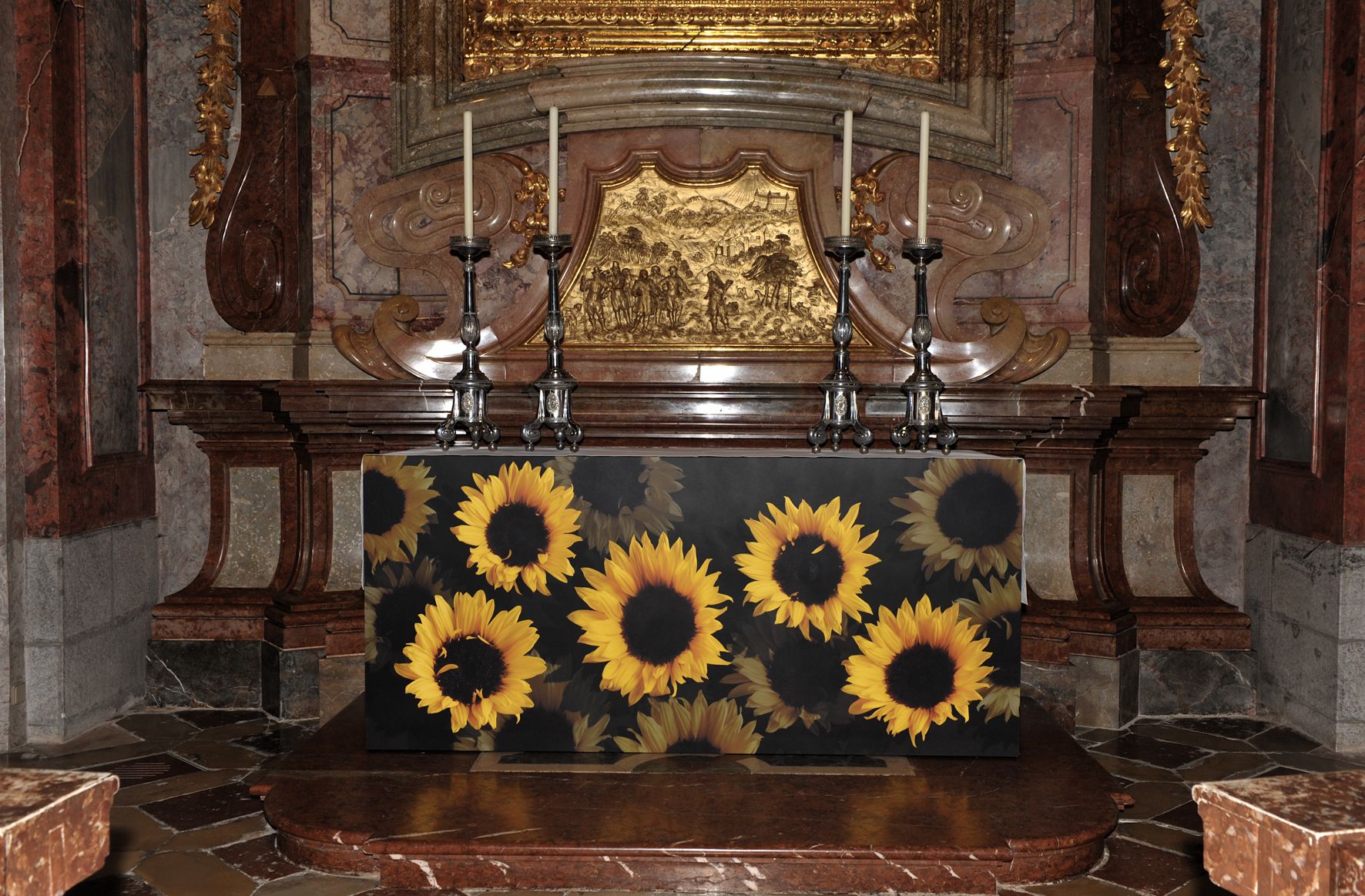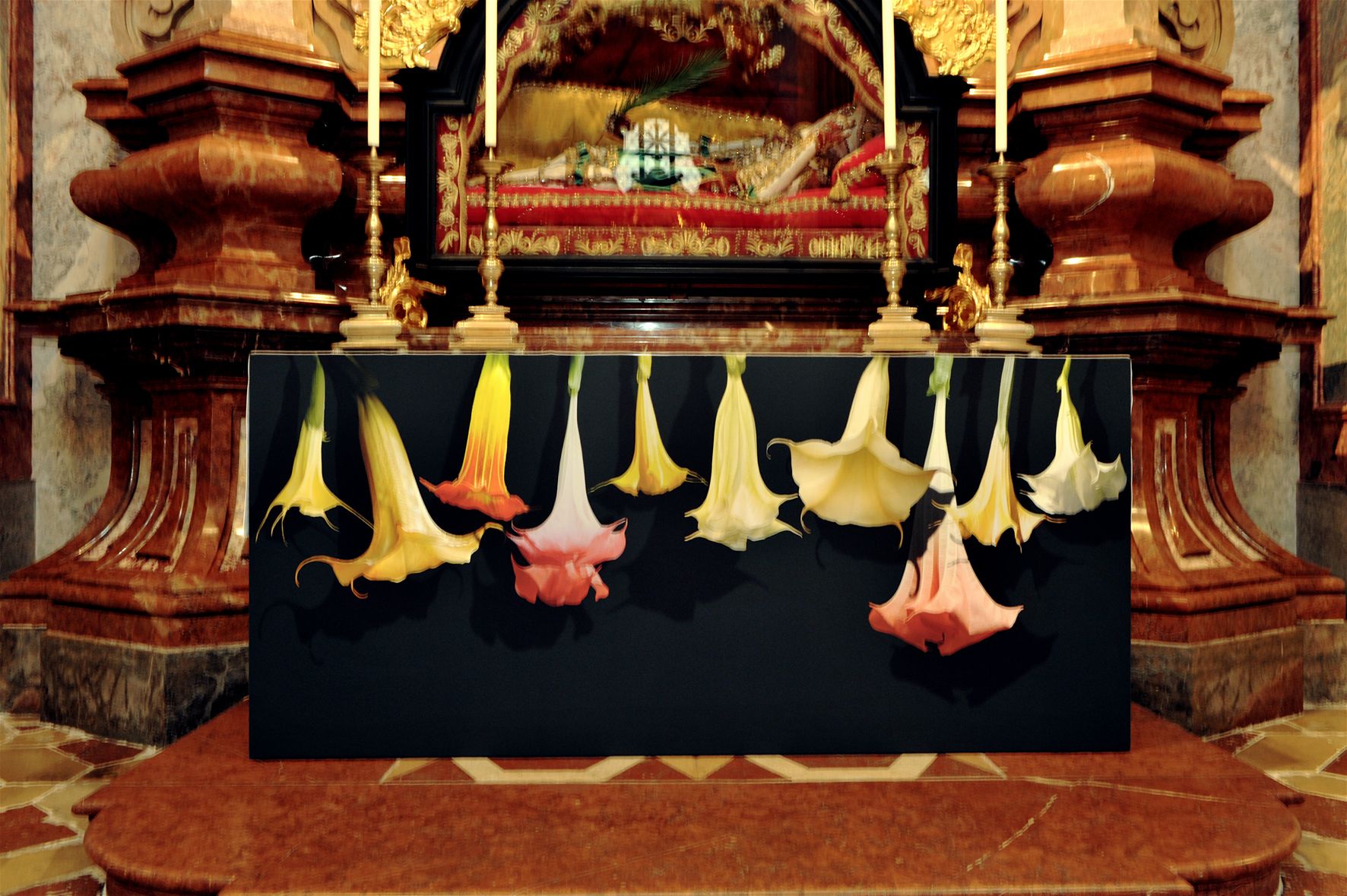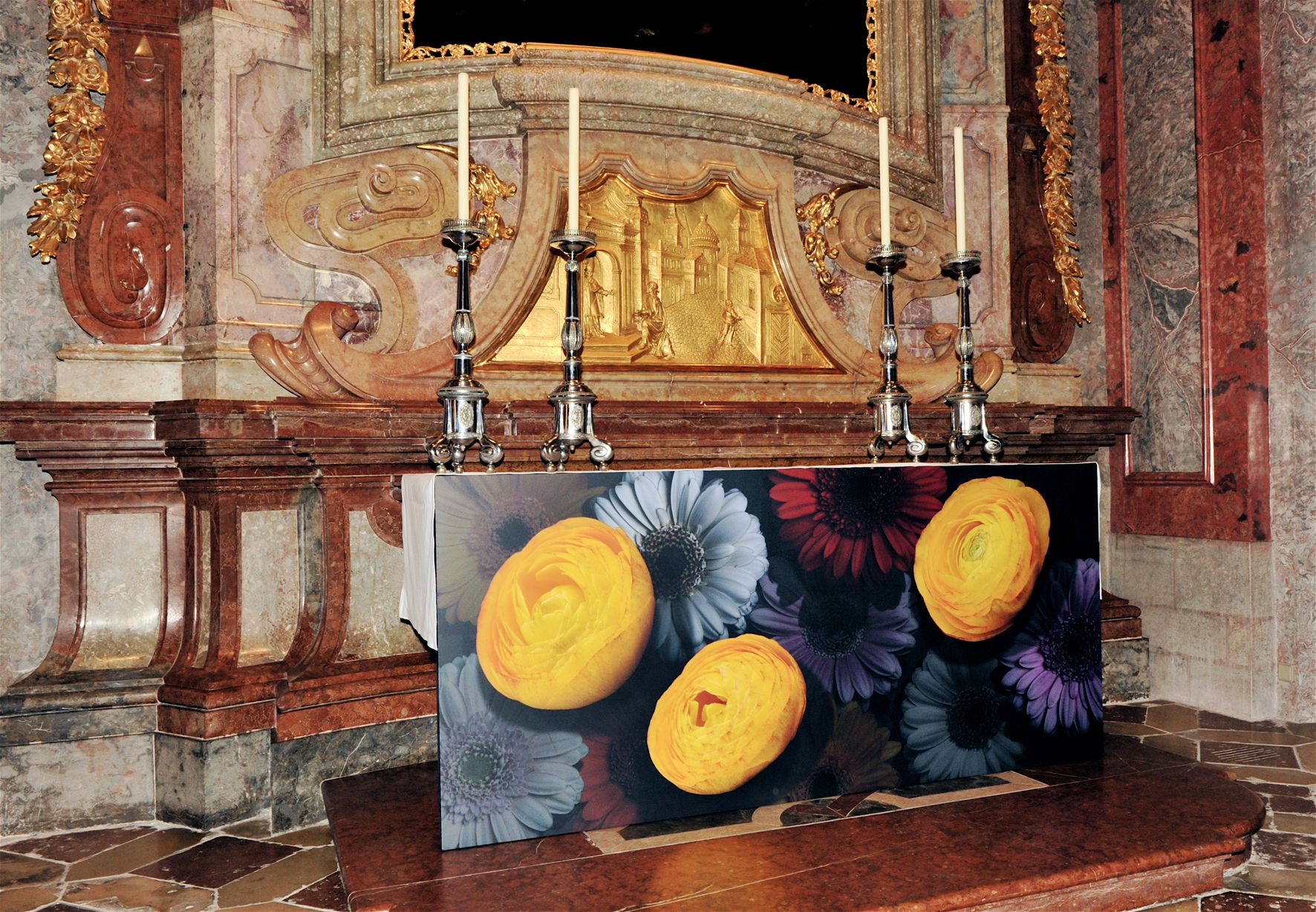Martin Strauß,
Stefan Strauß
:
Flowers– in Memoriam Martin Strauß
Back
Information
For his artistic project in the abbey church in Melk, Martin Strauß drew on the Christian "iconography of flowers", which he combined with the legends of the saints to whom the altars in the Baroque abbey church are devoted. Taking this as a starting point, he designed digital floral images for the frontals of the nine altar tables.
Martin Strauß was commissioned in the summer of 2010 to create an artistic motif for the nine altar frontals in the church of the Benedictine Abbey in Melk, one of the most magnificent Baroque church interiors with a unified design. After his sudden death during the planning stage, the project was completed by his brother, the artist Stefan Strauß. The two brothers had developed numerous public art projects together in the course of their artistic careers. Martin Strauß studied philosophy and sociology and was an artist, curator, and author, while Stefan Strauß studied philosophy and art and is also an artist and curator. Despite their shared focus on public space in their work, Martin was more oriented towards mass media and Stefan towards architecture.
For his artistic project in the abbey church in Melk, Martin Strauß drew on the Christian "iconography of flowers", which he combined with the legends of the saints to whom the altars in the Baroque abbey church are devoted. Taking this as a starting point, he designed digital floral pictures for the frontals of the nine altar tables. Martin Strauß assigned each saint a type of flower primarily based on Christian iconography as well as his own analogies. Corresponding with legend, St. Coloman is represented by elderflowers, and Mary by the Marian thistle. St. Benedict’s symbolic equivalent, however, is the lily, and St. Leopold’s is the sunflower.1 At the time of his death, Martin Strauß had designed a test version of a digital montage for one of the altars. The final versions of the other images were created by his brother, Stefan Strauß, who later wrote: "The key idea here was to establish a context of references based on the rich Christian symbolism of plants and flowers as well as the self-evident necessity to also integrate these into a traditional iconology."
Martin Strauß had explored this artistic idea already in a number of flower pictures in 2006, which he never exhibited in public. In those pictures, he merged a large number of photos into a single dense, highly artificial blanket of flowers. In contrast to those ornamental works, the flowers on the altar frontals in the abbey church are magnified to the extreme and are arranged in irregular patters without filling the entire picture plane. Corresponding with the Portuguese word barroco used to describe irregularly formed pearls – which is the root of the term "Baroque" – the flowers differ from each other in detail. The extreme contrast of light and dark makes the pictures seem highly artificial, while the uneven distribution of flowers gives them an animated appearance. All of these formal characteristics can be seen as allusions to the Baroque interior of the church – the way light is used to create a mystical atmosphere, the negation of a static order, and the enhancement of visual effects.
It is obvious that Martin Strauß was not merely interested in translating content into form using Christian iconography. Rather, he was searching for a contemporary artistic response to the overall concept of the Baroque church interior. While the beauty of the flower pictures may seem misleading, his installation can be seen as an intellectual analysis based on form. The artist not only applied a new approach to the themes of the altars, finding new associations that are different from the traditional ones – like the lily, which is generally a symbol for the annunciation in traditional painting, but not as an attribute of St. Benedict – Martin and Stefan Strauß also explore the architectural and pictorial language of the Baroque era, relying on pictorial codes from our own time to help us decipher the essence of this language.
(C.Offergeld)




